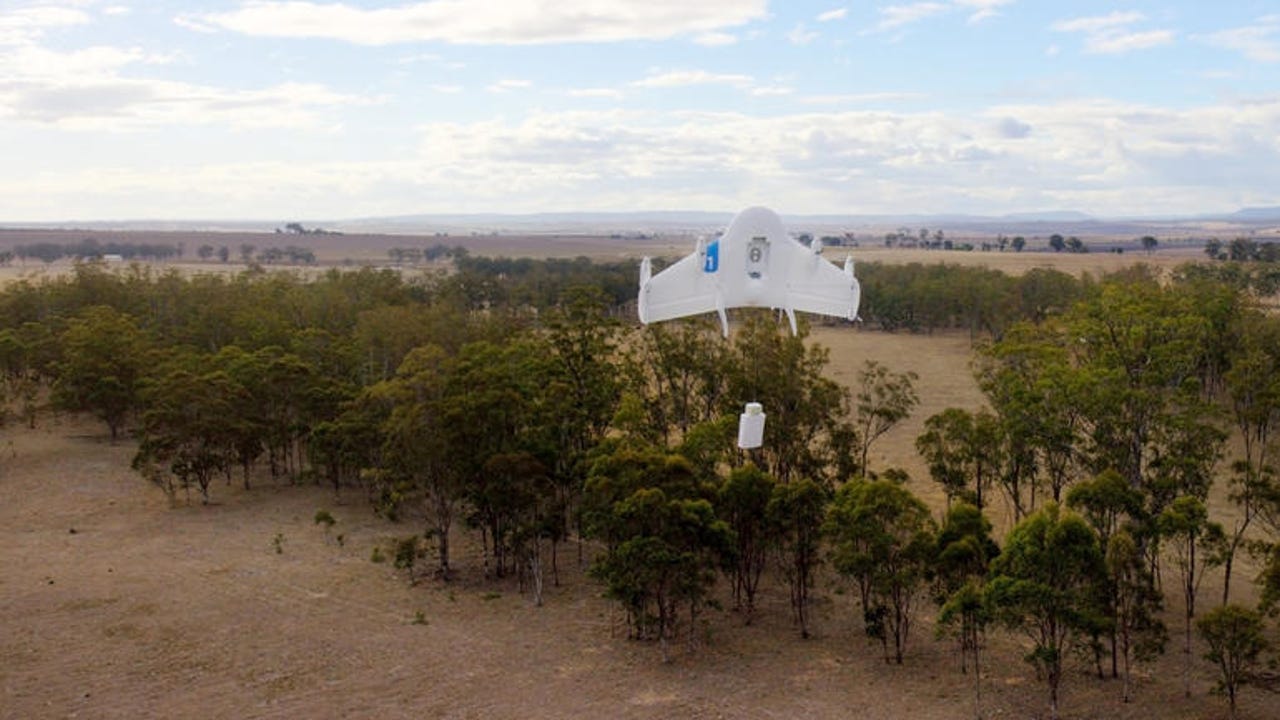No place like drone: Can unmanned aerial vehicles find their place in Europe?


At one stage, the biggest threat to the nation's youth coming from the Stadium Letzigrund In Zurich was The Rolling Stones and their music. This summer, it wasn't the group that was seen a risk to the public, but the drone flying overhead and taking pictures.
Unlike the Serbia-Albania European Championship football match, which was abandoned after a brawl sparked by a drone carrying an Albanian flag, it wasn't crowd trouble the police feared — but the threat to public safety had the drone crashed.
As a result of police concerns, aviation authorities have now tightened the regulations. The Office federal de l'aviation civile (OFAC) has banned all flights by drones (also known as UAVs or unmanned aerial vehicles) within 100m of a group of people. Any drone pilot also has to have direct eye contact with the UAV at all times, and that distance can't be extended by using binoculars or video cameras. Although you can fly a drone that weighs 30kg or less without any special authorisation, heavier drones and drones that fly out of sight have to be approved by OFAC, which is making it clear that permission will only be granted in exceptional circumstances.
The ban on drones in populated areas brings Switzerland in line with most countries around Europe. "Generally speaking flying in line of sight, at very low altitude, outside populated areas is what most national regulations tend to allow for, especially if your system is lightweight," Jean-Christophe Zufferey, CEO and founder of senseFly, said.
A spinoff of the Laboratory of Intelligence Systems at EPFL (the Swiss Federal Institute of Technology), senseFly is growing fast. "We've gone from two employees when we started in 2009 to over 80 today. We produce 100 drones a month that sell in more than 60 countries."
Typically, with Switzerland's rugged Alpine landscape, the drones that the Lausanne-based company sell in their home market account are used for mapping and surveying. Local sales account for about 10 percent of the company's business.
"About 95 percent of missions we're looking at are up to about one square kilometre, so it's easy to maintain line of sight with the drone.
"Most of the time you want to fly low – less than 150m above the surface, where most planes can't fly – as that's better for achieving high resolution photography and accurate measurements," Zufferey said.
Currently, Swiss legislation also allows autonomous drones. "There's an assumption that that there is an operator somewhere who is keeping the drone in line of sight. Our products have action buttons to lower altitude, remain on the spot, go in a fast dive or get back home, so you can act if you see a danger." Geofencing both distance and altitude ensures that the drones using GPS to fly autonomously stay within set limits to preserve line of sight.
Europe-wide regulation
As drones are likely to cross borders (as well as patrol them) Switzerland, like other countries outside the EU, will also be affected by the European Commission's proposals for a pan-European framework to govern their use.
The European Commission is keen to adopt a friendly-skies policy to the introduction of civil drones, which it sees as a great commercial opportunity.
Over the next 10 years it's estimated that civil drones could make up 10 percent of the aviation market, around €15bn a year. About a third of the 500 drone manufacturers – both military and civil – are based in Europe, with estimates that the sector will create up to 150,000 jobs across the continent by 2050.
In fact, the EC describes the likely economic impact of drones as comparable "to the development of the internet in the nineties". But to avoid the same growing pains as the information superhighway the EU wants drone traffic to be regulated.
"We need a single set of regulations that everyone can work with," said the commissioner for mobility and transport Siim Kallas, who has the task of developing a European framework for integrating drones into civil airspace from 2016. The new regulations will cover air safety; privacy and data protection such as who and where you can film; security to prevent drones being used unlawfully or as weapons; and third-party liability and insurance schemes for when the worst happens.
Only drones that have a pilot somewhere – however far away – are allowed in European airspace hence they are known officially as Remotely Piloted Aviation Systems (RPAS). Entirely automated, unmanned drones with no pilot anywhere are not authorised.
Under the current arrangements it's up to individual countries to regulate drones to fly like normal air traffic in the same, non-segregated airspace as piloted aircraft. Like Switzerland, some EU member states including Sweden, France, Denmark, Italy, Germany, Czech Republic, Lithuania and the UK allow drones to operate but the rules vary. Pilots in the UK, for example, through their association BALPA, lobbied the British House of Lords recently as part of their campaign for a "safe drone zone" with drone operators subject to the same training and regulation as airline pilots.
It is still early stages for the drone market, said Zufferey, and it's clear that it's being held back by lack of co-ordinated regulation and legal frameworks.
"Regulation is all over the place. There are some attempts to harmonise the rules, specifically in the EU but they are not progressing well," he said.
Many countries are waiting to see what the US does. Regulators the Federal Aviation Authority (FAA) have still to define their rules.
"The US market has great potential for us, but not at the moment as the regulations don't allow, or only in some specific cases, the use of drones for commercial operations," said Zufferey.
Could your business use a drone?
The short answer is quite probably, in the future. Drones come in handy for the jobs that are dirty, dull, or dangerous. For those interested in deploying drones, here are some of the areas where early adoption is likely to begin.
- Delivery drones – from everyday mail to the urgent package – be it the latest book from Amazon or medical supplies – drones can be particularly useful in remote areas.
- Active drones – used for tasks such as spraying crops with pinpoint accuracy.
- In the air, air station – drones equipped with wi-fi it can provide broadband connectivity in places where it would not be available otherwise, or on a temporary basis, such as for the out-of-the-way muddy fields of music festival venues like Glastonbury.
- Cameras – UAVs can act as eyes in the sky to show what's happening in areas that are hard to reach. They can be used for tasks such as safety inspections of infrastructure like rail tracks, dams or power grids or inspecting the underside of an oil rig, hundreds of miles offshore. More artistically, the Saatchi Gallery has a stunning aerial photo taken by drone of nine climbers on top of the Jungfrau mountain. More mundanely, Telecom Italia is using three drones to film work on the site of next year's world fair in Milan, Expo15, which it then broadcasts on various websites and social channels as well as the Expo ground itself.
- RFID antennas or sensors – drones can be used to track people and objects or monitoring for changes in environmental conditions. Drones are already used in Africa to protect endangered species from poachers. They could equally be a more secure, cost-effective way to monitor factories against intruders or track heavy goods and machinery, and valuable assets.
- Disaster relief – national authorities are using drones to assess flood damage and check on the spread of forest fires. A Swiss computer science student from the École Polytechnique Fédérale de Lausanne (EPFL) has also developed a system for using drones to find survivors in a natural disaster via their mobile phone.
Or should the robots fail:
- The human drones - rather than take to the air, Google Street View has joined forces with the Swiss Alpine Club to map hiking trails through the mountains. The Swiss mountain hikers wear a backpack with a 15 camera system on top that produces images that give a 360 degree view. The virtual hike has a commercial aim to attract more hikers to alpine landscapes and the Swiss Alpine Club's network of mountain huts.